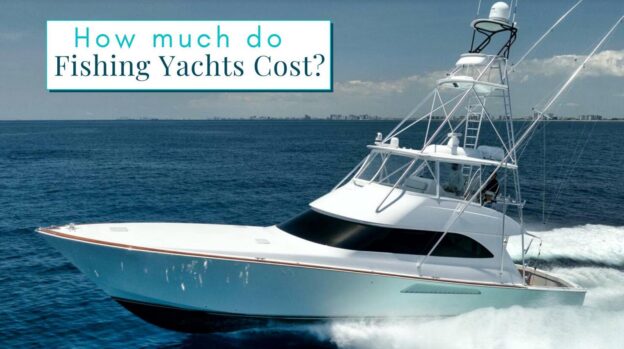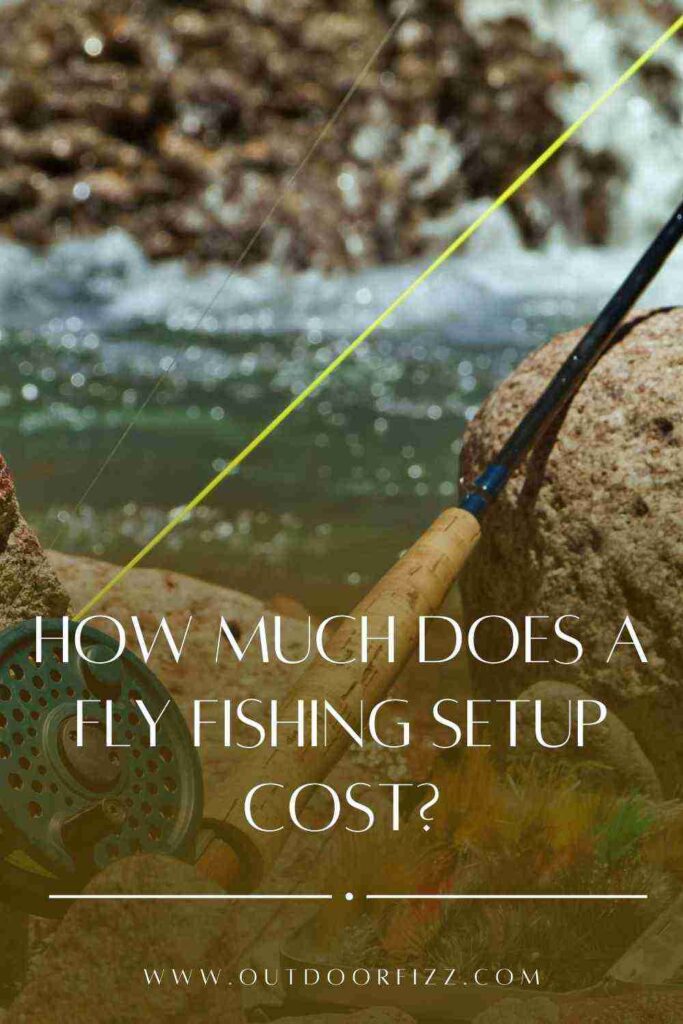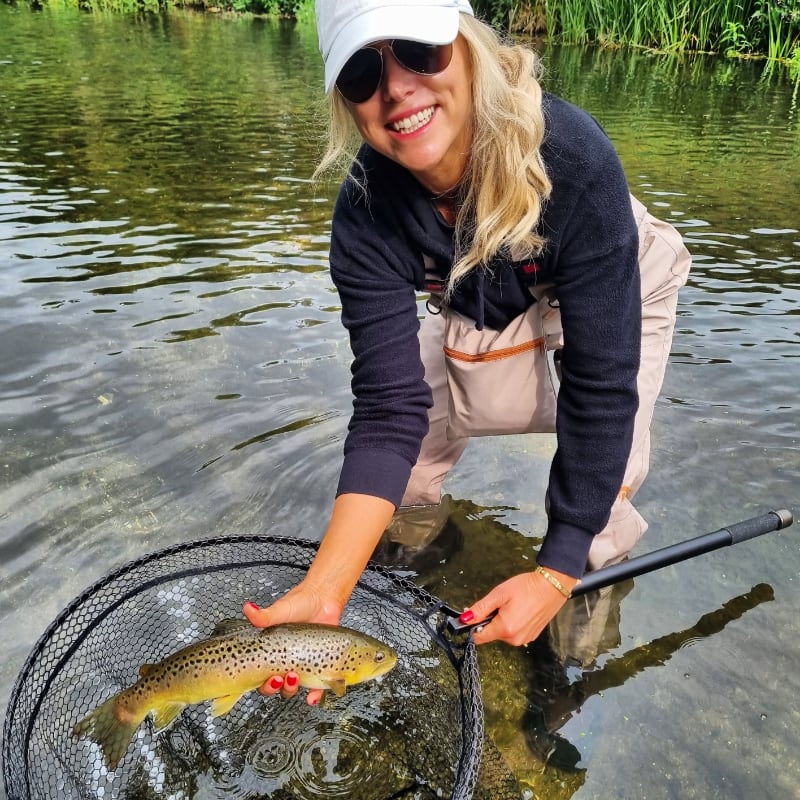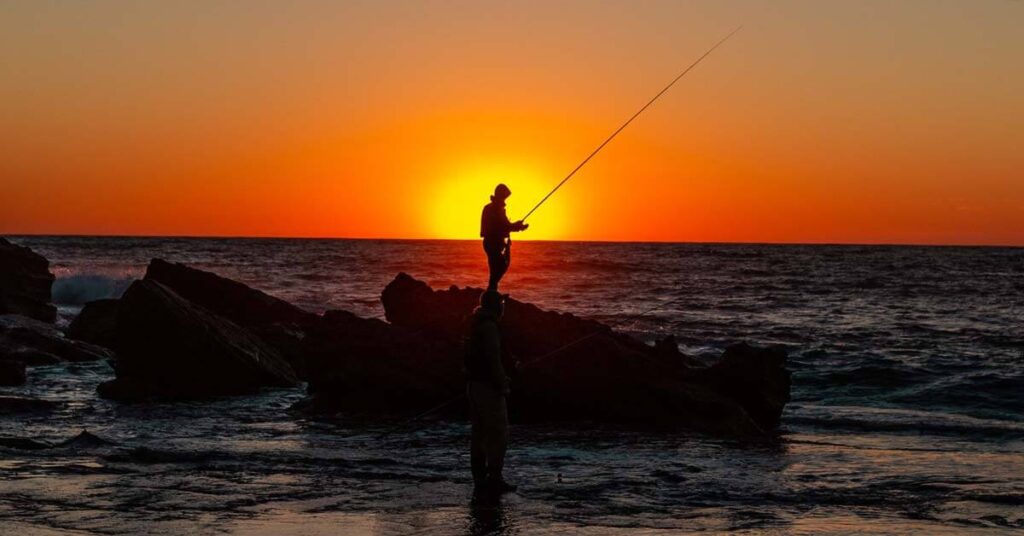So you’re thinking about getting into fishing and you’re wondering just how much a fishing boat is going to set you back? Well, you’re in luck because we’ve got all the details you need! In this article, we’ll be taking a closer look at the price range of fishing boats, giving you an idea of what to expect when it comes to investing in your own vessel. Whether you’re a novice angler or a seasoned pro, finding the right fishing boat that fits your budget is essential. Let’s dive right in and discover how expensive a fishing boat can be!

This image is property of yachts360.com.
Factors Affecting the Cost of a Fishing Boat
When it comes to the cost of a fishing boat, there are several factors that can greatly influence the price you can expect to pay. Understanding these factors can help you make an informed decision and find the fishing boat that best fits your budget and needs. Let’s take a closer look at the main factors that affect the cost of a fishing boat.
Size of the Boat
The size of the boat is one of the primary factors that determine its cost. Generally, larger fishing boats tend to be more expensive due to the increased materials and manufacturing costs required to build them. Additionally, larger boats often come equipped with more features and amenities, which can also drive up the price. If you’re on a tight budget, opting for a smaller fishing boat may be a more cost-effective choice.
Type of Boat
The type of fishing boat you choose will also have a significant impact on the overall cost. There is a wide range of fishing boat types available, each designed for specific fishing conditions and purposes. Some common types of fishing boats include center console boats, sportfishing boats, pontoon boats, and cabin cruisers, among others. Each type comes with its own set of features, materials, and construction requirements, all of which contribute to the final price.
Material Used
The material used in the construction of the fishing boat can greatly affect its cost. Different materials have different properties, durability, and maintenance requirements, which can influence the overall price. Some common materials used in fishing boats include aluminum, fiberglass, and inflatable materials. Aluminum boats are typically more affordable, while fiberglass boats tend to be more expensive due to their durability and sleek appearance.
Brand
The brand of the fishing boat can also impact its cost. Well-known and reputable brands often come with a higher price tag due to their quality reputation and customer demand. While these brands may be more expensive, they often offer better warranties, customer support, and resale value. However, it’s important to note that lesser-known brands can still provide excellent quality at a more affordable price. It’s always a good idea to research and compare different brands to find the best value for your budget.
Features and Accessories
The features and accessories included with a fishing boat can significantly affect its cost. Boats with additional features and amenities such as a fish finder, GPS navigation system, livewells, rod holders, and comfortable seating will generally be more expensive. These features enhance the fishing experience and make the boat more versatile, but they can also add to the overall price. Prioritize the features that are most important to you and consider which ones you can do without to save on costs.
Customization Options
Some fishing boat manufacturers offer customization options, allowing you to choose specific features, colors, and layouts to suit your preferences. While customization can enhance the personalization and uniqueness of your fishing boat, it can also add to the cost. Customization options typically involve additional labor and materials, resulting in a higher price tag. If customization is a priority for you, be prepared to pay extra for these personalized touches.
Average Prices of Fishing Boats
Now that we’ve explored the factors that affect the cost of a fishing boat, let’s take a look at the average prices for different types of fishing boats. It’s important to note that these prices are just averages and can vary depending on various factors such as size, brand, materials, and features.
Inflatable Boats
Inflatable fishing boats are often the most affordable option, with prices starting around $500 for basic models. These boats are lightweight and easy to transport but may not offer the same durability or stability as other types of fishing boats.
Aluminum Boats
Aluminum fishing boats are popular due to their affordability and durability. Depending on the size and features, prices can range from $5,000 to $30,000 or more for larger, high-end models.
Fiberglass Boats
Fiberglass fishing boats are known for their sleek appearance, durability, and smooth ride. Prices for fiberglass boats typically start around $10,000 for smaller models and can go up to $100,000 or more for larger, high-performance boats.
Pontoon Boats
Pontoon boats are excellent choices for anglers who prioritize comfort and stability. Prices for pontoon boats can range from $10,000 for basic models to $100,000 or more for larger, luxury options with advanced features and amenities.
Center Console Boats
Center console boats are versatile and popular among anglers for their open layout and easy access to fishing areas. Prices for center console boats start around $20,000 for smaller models and can reach well over $100,000 for high-performance, top-of-the-line options.
Sportfishing Boats
Sportfishing boats are designed for serious anglers and offshore fishing. These boats are often larger and more expensive, with prices starting around $100,000 for entry-level models and going up to several million dollars for luxury sportfishing yachts.
Cabin Cruisers
Cabin cruisers are ideal for those who enjoy overnight fishing trips or spending extended periods on the water. Prices for cabin cruisers can range from $50,000 for smaller models to several hundred thousand dollars for larger, luxurious options.
Luxury Yachts
Luxury yachts are the epitome of extravagance and can cost several million dollars or more. These high-end fishing boats often come with luxurious features, high-performance engines, and spacious accommodations for extended trips.

This image is property of www.unitedyacht.com.
Cost Breakdown of Fishing Boats
When considering the overall cost of owning a fishing boat, it’s essential to understand the various components that contribute to the final price. Let’s break down the cost of fishing boats into different categories.
Boat Hull
The boat hull is the main structure of the boat and is typically one of the most substantial costs. The type of material used for the hull, such as aluminum or fiberglass, can impact the cost. Additionally, larger boats with more complex hull designs may be more expensive due to the increased materials and labor required.
Engine and Fuel System
The engine and fuel system are crucial components of a fishing boat, responsible for powering the vessel and enabling it to navigate the waters. The price of the engine can vary depending on factors such as size, brand, and horsepower. Fuel system costs include tanks, lines, filters, and associated accessories.
Electronics and Navigation Equipment
Fishing boats often come equipped with various electronics and navigation equipment, such as fish finders, GPS systems, and marine radios. The cost of these items can vary depending on the brand, features, and technology. High-end options with advanced features may come at a higher price.
Fishing Gear and Accessories
To make the most of your fishing trips, you’ll need fishing gear and accessories such as rods, reels, bait, tackle boxes, and fishing nets. These costs can add up depending on the quality and quantity of items you choose to purchase. It’s essential to budget for fishing gear and accessories in addition to the boat itself.
Safety Equipment
Safety should be a top priority when owning a fishing boat. Safety equipment includes life jackets, fire extinguishers, distress signals, anchor systems, and other essential safety gear. While safety equipment costs may not be as significant compared to other components, they are necessary for a safe and enjoyable boating experience.
Maintenance and Storage Costs
Owning a fishing boat involves ongoing maintenance and storage expenses. Regular maintenance, such as engine tune-ups, hull cleaning, and replacement of worn-out parts, can incur costs over time. Additionally, storing the boat when not in use may require fees for dock space, marina rental, or off-site storage facilities. It’s essential to factor these costs into your budget to ensure the long-term affordability of boat ownership.
Additional Costs Associated with Owning a Fishing Boat
In addition to the cost breakdown mentioned above, there are several other expenses to consider when owning a fishing boat. Let’s look at some of the additional costs you may encounter.
Boat Insurance
Boat insurance is an essential expense that protects your investment and provides liability coverage in case of accidents or damage. The cost of boat insurance can vary depending on factors such as the boat’s value, coverage limits, location, and your boating experience.
Docking and Mooring Fees
If you plan to keep your fishing boat at a marina or dock, you will likely incur docking or mooring fees. These fees can vary depending on the location, size of the boat, and duration of stay. It’s important to research and budget for these ongoing expenses.
Fuel Costs
Fuel costs can be a significant expense when owning a fishing boat, especially for larger boats or those used frequently. The fuel consumption of a boat depends on various factors, including the size of the engine, boat weight, and cruising speed. It’s important to estimate and budget for fuel costs based on your anticipated usage.
Maintenance and Repairs
As with any vehicle or equipment, fishing boats require regular maintenance and occasional repairs. These expenses can include engine servicing, hull repairs, painting, and replacing worn-out components. Depending on the age and condition of the boat, these costs can vary significantly.
Winterizing and Storage
If you live in an area with harsh winters, winterizing your fishing boat is essential to protect it from freezing temperatures and other winter-related damage. Winterizing may involve draining water systems, adding antifreeze, and removing or protecting delicate components. Additionally, storing the boat during winter months may incur storage fees if you don’t have suitable on-site storage options.
Towing and Transportation
Transporting a fishing boat to and from the water can also come with associated costs. If you don’t have a trailer or appropriate towing vehicle, you may need to arrange for professional transportation. These costs can vary depending on the distance, boat size, and transportation provider.
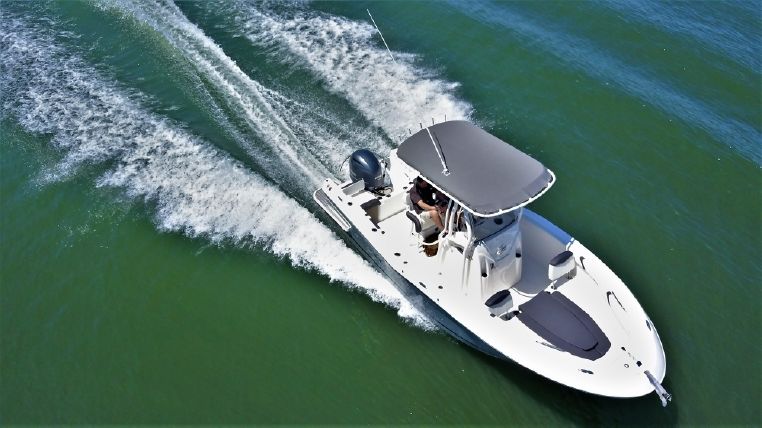
This image is property of yachts360.com.
Considerations When Buying a Fishing Boat
Buying a fishing boat is an exciting and significant investment. To ensure you make the right choice, there are several important factors to consider. Let’s explore these considerations in more detail.
Budget and Financing Options
Before you start searching for a fishing boat, it’s crucial to establish your budget. Determine how much you’re willing to spend on the boat, as well as factoring in ongoing expenses such as maintenance, storage, and insurance. If needed, explore different financing options, such as boat loans or personal loans, and consider the monthly payments you can comfortably afford.
Usage and Requirements
Consider how you plan to use your fishing boat and the specific requirements you have. Will you mainly be fishing in freshwater or saltwater? Do you need a boat that can navigate rough offshore conditions or one designed for calmer inland waters? Understanding your fishing needs and the environments you’ll be boating in will help you choose the right type and size of boat.
New vs Used Boats
Deciding between buying a new or used fishing boat is a personal choice that depends on your budget, preferences, and desired features. New boats offer the advantage of being in pristine condition and often come with warranties and the latest features. However, used boats can provide excellent value for money if well-maintained and offer more affordable options within your budget.
Researching and Comparing Prices
Take the time to research and compare the prices of fishing boats that fit your budget and requirements. Explore reputable dealerships, online marketplaces, and boat shows to gather information on the current market prices. By comparing prices, you can ensure you’re getting a fair deal and find the best value for your budget.
Negotiating the Purchase Price
When buying a fishing boat, don’t be afraid to negotiate the purchase price. Dealerships or private sellers may be open to price adjustments, especially if the boat has been on the market for a while or if you’re purchasing at the end of the boating season. Doing your research and being prepared to negotiate can potentially save you a significant amount of money.
Inspecting the Boat
Before closing the deal on a fishing boat, it’s essential to thoroughly inspect the vessel. If you’re buying a used boat, consider hiring a professional marine surveyor to assess the boat’s condition, including the hull, engine, electrical systems, and overall functionality. This inspection will give you peace of mind and help identify any potential issues or necessary repairs.
Tips for Saving Money on a Fishing Boat
While buying a fishing boat can be a significant investment, there are several ways to save money without compromising on quality. Consider the following tips to make your fishing boat purchase more budget-friendly.
Buying During the Off-Season
Boat prices tend to be higher during the peak boating season when demand is high. Consider purchasing your fishing boat during the off-season or at the end of the boating season when dealerships may offer discounts and incentives to clear out inventory.
Choosing a Smaller Boat
Smaller fishing boats are generally more affordable compared to larger, high-performance models. Assess your fishing needs and determine if a smaller boat can adequately meet your requirements. Opting for a smaller boat can not only save you money on the initial purchase price but also on ongoing operating costs, such as fuel and maintenance.
Opting for a Pre-Owned Boat
As mentioned earlier, buying a used fishing boat can provide significant savings compared to purchasing a brand-new model. However, it’s crucial to do your due diligence and thoroughly inspect the boat to ensure it’s in good condition. Consider purchasing from reputable sellers and ask for maintenance records to gain confidence in the boat’s history.
Comparing Insurance Quotes
Boat insurance costs can vary depending on the coverage options, boat value, and your personal circumstances. Take the time to compare insurance quotes from different providers to ensure you’re getting the best coverage at the most affordable price. Additionally, consider bundling your boat insurance with other policies, such as homeowner’s insurance, to potentially save on premiums.
Handling Basic Maintenance Tasks
While some maintenance tasks may require professional assistance, there are several basic maintenance tasks you can handle yourself. Learning how to perform routine maintenance, such as cleaning the boat, checking the engine, and changing the oil, can save you money on hiring technicians for every small task.
Joining a Boat Club
If you don’t plan to use your fishing boat frequently or would like to explore different boat options without the commitment of ownership, consider joining a boat club. Boat clubs allow you to access a fleet of boats for a monthly or annual fee, eliminating the need for purchasing, maintaining, and storing your own boat.

This image is property of yachts360.com.
Popular Fishing Boat Brands and Their Price Ranges
There are numerous fishing boat brands available, each with its own reputation, quality, and price range. Here are some popular fishing boat brands and an approximate price range for their models:
Tracker
Tracker boats are known for their affordability and excellent value for money. Prices for Tracker fishing boats typically start around $10,000 for entry-level models and can reach up to $70,000 for larger, more feature-rich options.
Grady-White
Grady-White is a reputable brand known for producing high-quality fishing boats. Prices for Grady-White boats start around $50,000 for smaller models and can exceed $500,000 for larger, luxurious options.
Boston Whaler
Boston Whaler is recognized for its unsinkable boats and durable construction. Prices for Boston Whaler fishing boats start around $20,000 for smaller models and can surpass $1 million for high-performance, luxury yachts.
Ranger
Ranger boats are known for their craftsmanship and performance. Prices for Ranger fishing boats typically start around $30,000 for smaller models and can go up to $100,000 or more for larger, premium options.
Sea Ray
Sea Ray offers a range of fishing and recreational boats known for their quality and comfort. Prices for Sea Ray boats start around $50,000 for smaller models and can exceed $1 million for larger, luxury yachts.
Scout
Scout boats are renowned for their innovative design and versatility. Prices for Scout fishing boats start around $30,000 for smaller models and can go up to $400,000 or more for larger, high-end options.
Yellowfin
Yellowfin boats are popular among serious anglers for their performance and stability. Prices for Yellowfin fishing boats typically start around $100,000 for smaller models and can reach well over $1 million for larger, high-performance boats.
Contender
Contender is known for its offshore fishing boats designed for rough conditions. Prices for Contender fishing boats start around $50,000 for smaller models and can exceed $500,000 for larger, high-performance options.
Southport
Southport boats are known for their craftsmanship, comfort, and offshore performance. Prices for Southport fishing boats typically start around $100,000 for smaller models and can surpass $500,000 for larger, luxury options.
Viking
Viking is a luxury yacht manufacturer that offers high-end fishing boats with luxurious accommodations. Prices for Viking fishing boats often exceed several million dollars, depending on the size, features, and customization options.
Hatteras
Hatteras is another well-known luxury yacht brand that offers premium fishing boats. Prices for Hatteras fishing boats can often exceed several million dollars, depending on the size, features, and customization options.
Conclusion
Buying a fishing boat is an exciting endeavor, but it’s essential to consider all the factors that affect the cost to make an informed decision. The size, type, material, brand, features, and customization options can all impact the price of a fishing boat. Additionally, ongoing costs such as maintenance, insurance, and storage should be factored in. By understanding the average prices, cost breakdown, additional expenses, and various considerations, you can navigate the process of buying a fishing boat more confidently and find the best value for your budget. Happy fishing!

This image is property of images.boats.com.
